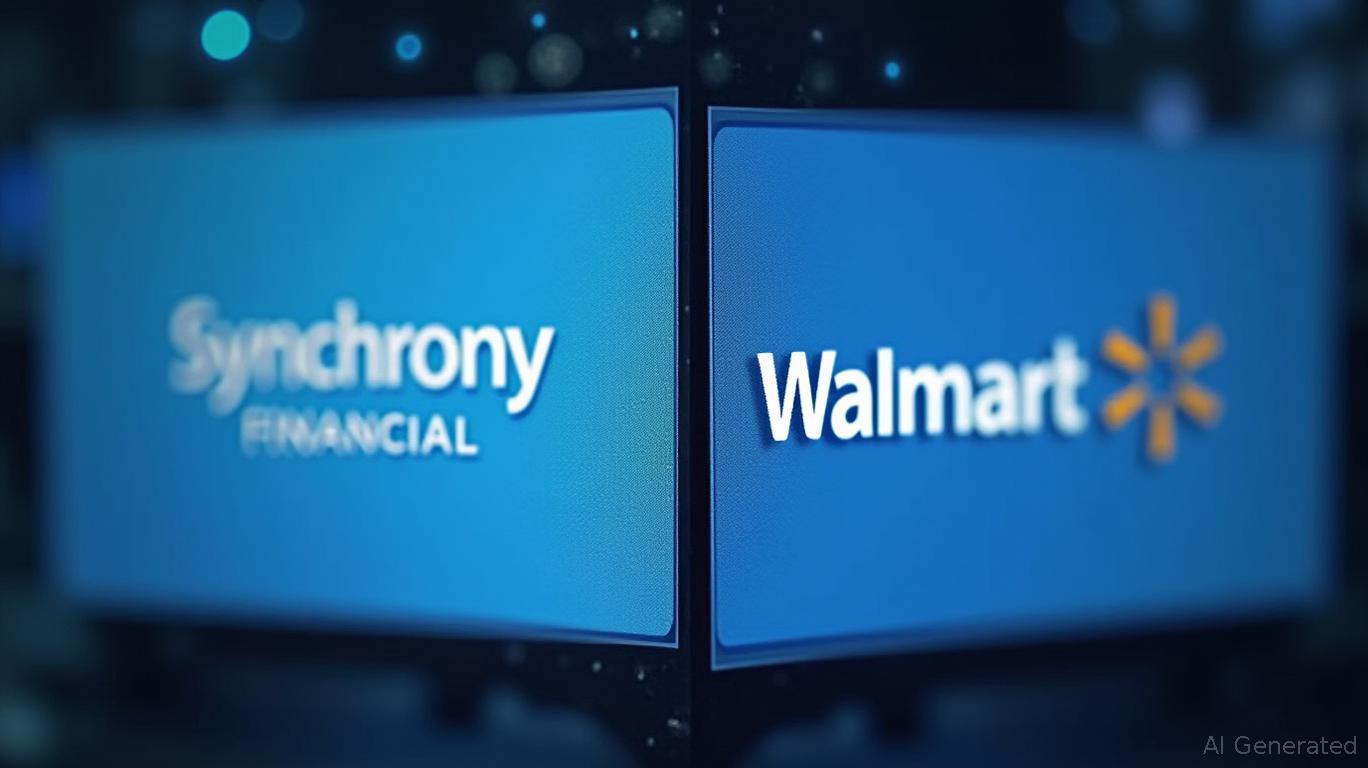Synchrony's Crossroads: Can the Retail Card Giant Navigate the Walmart Exit?

The termination of Synchrony Financial's (SYF) Walmart co-branded card partnership—a relationship that once accounted for 6% of Capital One's (COF) domestic card portfolio—has thrown both companies into a high-stakes game of resilience and reinvention. While Synchrony scrambles to offset the loss of a major revenue stream, Capital One is pivoting to retain Walmart's customer base while capitalizing on digital payment trends. Let's dissect the financial stakes and strategic moves reshaping the retail credit landscape.
Synchrony's Financial Flexibility: Testing the Limits
The Walmart deal's dissolution has exposed Synchrony's reliance on legacy partnerships. In Q4 2024, the company reported a 3% YoY decline in purchase volume and a 19% drop in new accounts, with its net charge-off (NCO) rate climbing to 6.45%—a 16% increase from a year earlier. These metrics underscore the strain of declining consumer spending and tightening credit standards.
Yet, Synchrony isn't without options. Its balance sheet remains robust, with a $19.5 billion revolving credit facility and a 2.5% dividend yield signaling liquidity. The company is pursuing two critical strategies to offset the Walmart loss:
- New Partnerships: Synchrony's renewal of its Sam's Club co-branded card and talks to acquire Goldman Sachs' Apple Card portfolio could inject fresh revenue. However, the Apple Card's high delinquency rates pose risks, as integrating troubled accounts could further pressure NCO metrics.
- Sector Diversification: Expanding into healthcare (e.g., CareCredit) and home improvement (e.g., ServiceTitan) aims to reduce reliance on retail. These sectors, with their sticky customer relationships, could stabilize cash flows, though scaling will require capital.
Risk Alert: Synchrony's 30.45% average APR on retail cards—a record high—exposes vulnerability to consumer debt defaults. Until interest rates ease, recovery remains fragile.
Capital One's Strategic Play: Retaining Walmart's Wallet
Capital One, which retained the $8.5 billion Walmart loan portfolio, faces its own challenges. While the deal's termination ended $214 million in 2022 net income, the bank is leveraging its scale to transition Walmart cardholders to its QuickSilver Mastercard, offering continuity and competitive rewards.
Key Growth Levers for Capital One:
- Tech-Driven Retention: Capital One's $7.5 billion annual tech budget is fueling AI-driven underwriting and personalized offers, aiming to lock in Walmart's customer base.
- Digital Ecosystem Ambitions: By aligning with Walmart's One subsidiary (which offers BNPL and banking services), Capital One could embed itself in Walmart's broader financial stack, capturing cross-selling opportunities.
- Market Share Grab: With Synchrony distracted by recovery efforts, Capital One is targeting new retail partnerships to offset the Walmart loss. Its proposed $30 billion acquisition of Discover would further bolster its card portfolio dominance.
Caveat: Walmart's push for in-house control via its One subsidiary threatens long-term reliance on third-party issuers. If Walmart shifts fully to self-issuance, Capital One's gains could prove temporary.
The Bigger Picture: Digital-First Partnerships Are Here to Stay
The Walmart-Synchrony split is a microcosm of a broader industry shift. Retailers like Walmart are prioritizing vertical integration, using fintech subsidiaries to reduce third-party fees and improve customer experience. Meanwhile, banks like Capital One must innovate in digital payments, BNPL, and open banking to stay relevant.
Investment Outlook: Synchrony's Gamble vs. Capital One's Steady Play
- Synchrony (SYF): A high-risk, high-reward bet. Investors should monitor its NCO trends () and progress on Apple Card integration. If Synchrony can stabilize credit metrics and diversify revenue, its 2.5% dividend yield and undervalued P/B ratio (0.8x) make it a potential turnaround story.
- Capital One (COF): A defensive play with upside. Its 1.2% dividend yield and fortress-like balance sheet (8.9% CET1 ratio) offer stability. Success in retaining Walmart's customers and closing the Discover deal could push its stock toward $150+, up from its current ~$120.
Final Take: Synchrony's survival hinges on executing a high-wire act of partnership pivots and cost control, while Capital One's tech-driven retention strategies and ecosystem plays position it as the safer long-term bet. For bulls, Synchrony's stock could be a contrarian value pick, but investors should brace for volatility.
Risk Disclosures: Past performance does not guarantee future results. Market conditions and regulatory changes could affect outcomes. Consult a financial advisor before making investment decisions.

Comments
No comments yet